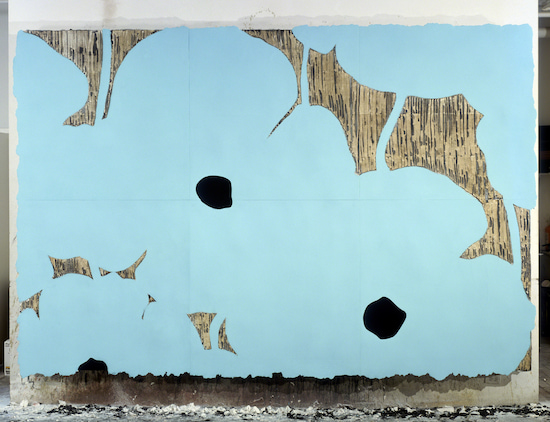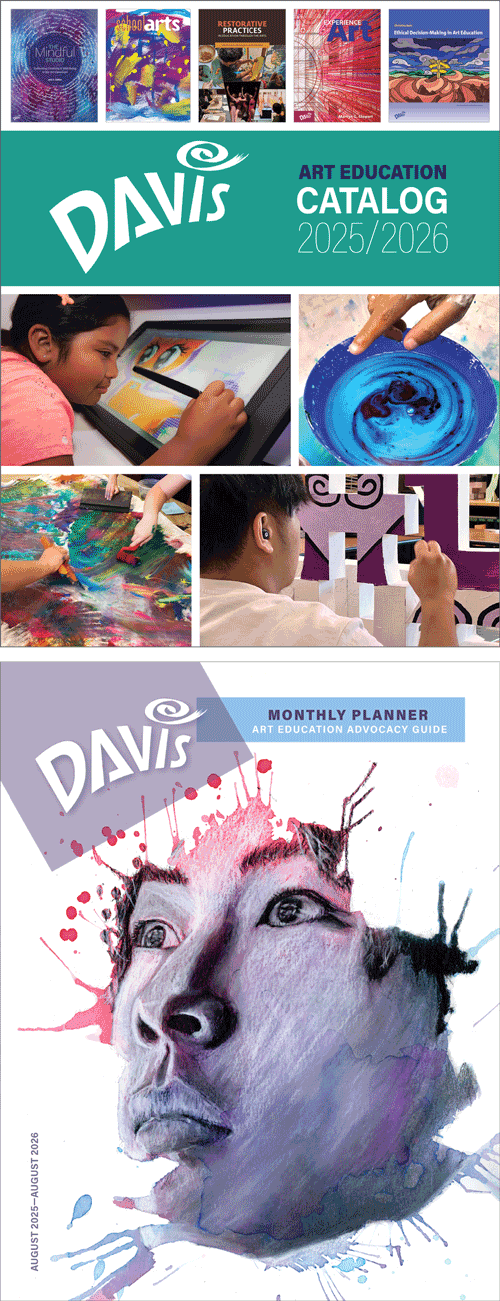Artist Birthday: Donald Sultan
Donald Sultan is part of the late 1900s New Image art phenomenon. In a break with Minimalism, Sultan wanted his figuration to present a monumental simplicity and directness of abstract art, while maintaining a tenuous connection to the real world.
Artist birthday for 5 May: Donald Sultan (born 1951, United States)
Donald Sultan, though often identified with Pop Art, sought connection to real world objects in his art in an abstract visual language.
 |
| Donald Sultan, Aqua Poppies, Dec 10, 2002, 2002. Enamel, flocking, tar, spackle, and tile on Masonite, 243.8 x 365.8 cm. Mint Museum of Art, Charlotte, NC. © 2025 Donald Sultan / Artists Rights Society (ARS), New York. (MIN-21sulars) |
In the 1980s, Sultan began to blow up his objects into monumental, flat shapes. Though he portrayed a variety of flowers throughout his career, the New Image artist is most celebrated for his pared-down poppies. These flowers epitomize the Pop art aesthetic: simplified, graphic, and easy to reproduce. Sultan utilizes construction materials and techniques to create elegant still-life paintings. His substantial poppies are painted a hue seldom found in nature. From a strict wooden grid he carves the outline of the shape of the flowers, filling the depressions with plaster, applies paint to define the petals and black flocking to signify the centers.
Unlike the blasé attitude towards subject matter in Pop Art, however, there is a nostalgic quality inherent in Sultan's vivid painting. The aqua color is reminiscent of mid-century automobiles, and the poppies may signify the flowers decorating veterans' graves. Sultan is interested in the juxtaposition of the natural with the industrial. He masterfully transforms humble materials to create a bold, yet ephemeral image.
Among the many counterpoints to the pervasive Minimalism-Post Painterly Abstraction-Abstract Expressionism styles dominating 1960s art, several outside of Pop Art and Photorealism emerged that reasserted the real world. One was the so-called New Image Painting, named after a 1978 exhibition of that name at the Whitney Museum of American Art in New York. The show provided a label for a group of emerging artists whose works generally featured recognizable objects presented in untraditional or non-illusionistic context.
Sultan grew up in Asheville, North Carolina, a flourishing art colony since the 1890s. Abstract Expressionism and Minimalist abstraction were two major movements in American art while he was growing up, and both veins influenced Sultan’s early work. His father was an amateur painter working with flat, horizontal compositions.
While studying at the School of the Art Institute in Chicago, Sultan painted for a time in the Jackson Pollock (1912–1956) action painting style, pouring paint on the canvas and throwing small found objects at it. Aware of the power of abstract shapes, an exhibition of Surrealist Marcel Duchamp (1887-1968) helped Sultan emerge from traditional painting technique. Duchamp and other Surrealists pioneered the idea of conceptual art, where the idea was more important than the finished work. Such an idea was revived during the 1960s and 1970s.
After the Chicago years, Sultan simplified his painting, reducing complex abstract forms into simple, often geometric shapes. In the process of distilling imagery from the real world, Sultan discovered the joy of ambiguity. Images in his paintings became overblown, usually on blank backgrounds that created not only contrast between positive and negative shapes. Sultan’s work is renowned for the tension between positive and negative shapes in flat, pattern-like compositions.

Comments